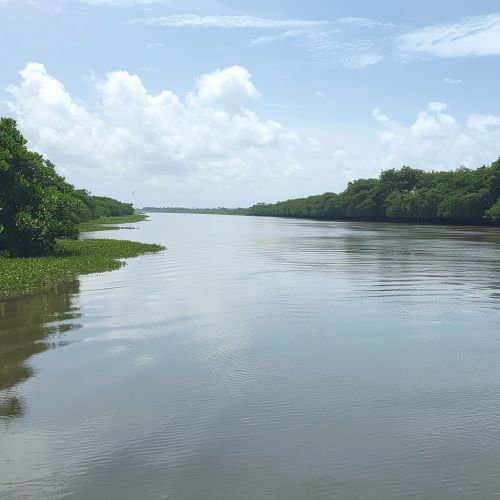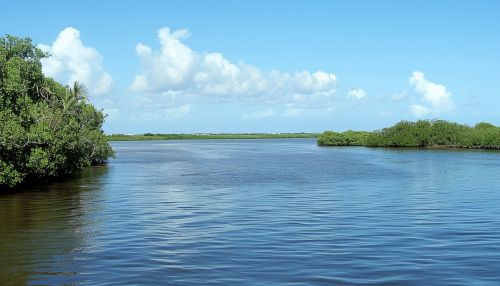Estuary
Definition and Overview
An estuary is a partially enclosed, coastal water body where freshwater from rivers and streams mixes with saltwater from the ocean. This unique environment is characterized by the fluctuation of its salinity levels and the high volume of nutrients it contains, making it a highly productive ecosystem.
Formation and Types
Estuaries form through a process known as drowned river valley, where the sea level rises and fills a river valley. The process can also occur through tectonic activity, where the land sinks and allows the sea to invade a river valley, forming a tectonic estuary. Another type of estuary is a bar-built estuary, which forms when a barrier island or sandbar builds up along the coastline, trapping freshwater behind it.
Physical Characteristics
Estuaries are characterized by their brackish water, which is a mixture of fresh and saltwater. The salinity of the water can vary greatly, depending on the volume of freshwater flowing into the estuary and the tidal range. The water in estuaries is generally more turbid than the open ocean and can contain high levels of nutrients.


Biological Characteristics
Estuaries are among the most productive ecosystems on Earth, providing a home for a diverse array of plant and animal species. The high nutrient levels in the water support a wide variety of phytoplankton, which form the base of the food chain. Other organisms that inhabit estuaries include zooplankton, benthic organisms, fish, birds, and mammals.
Ecological Importance
Estuaries play a crucial role in the ecology of the planet. They act as nurseries for many marine species, providing a safe and nutrient-rich environment for juvenile fish and invertebrates to grow and develop. They also serve as important feeding grounds for many bird species. Additionally, estuaries help to filter out pollutants from the water, improving water quality and reducing the impact of human activities on the ocean.
Human Impact and Conservation
Human activities have a significant impact on estuaries. Pollution, overfishing, and habitat destruction are major threats to these ecosystems. Conservation efforts are crucial to protect and preserve estuaries. This includes implementing sustainable fishing practices, reducing pollution, and restoring damaged habitats.
